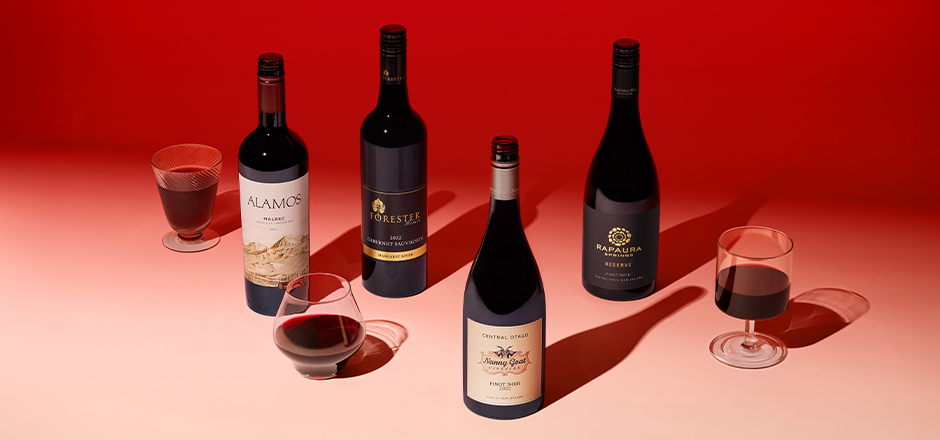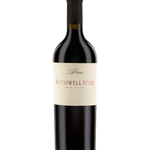You have no items in your shopping cart.
Red Wine Calories: A Comprehensive Guide to Caloric Content

Red wine is often celebrated for its rich flavors, complex aromas, and versatile pairings with food. But if you’re watching your calorie intake or looking for healthier drink options, you might be curious about how many calories are in red wine. Whether you enjoy a glass with dinner or a special occasion, knowing the red wine calories can help you make more informed choices without sacrificing taste.
In this guide, we’ll explore everything you need to know about red wine calories, including how they vary by type, what factors affect their content, and some tips for enjoying red wine mindfully.
What Determines Red Wine Calories?
Before we get into specific calorie counts, it’s important to understand what contributes to the calorie content of red wine. The primary factors that determine how many calories are in a glass of red wine include:
-
Alcohol Content (ABV): Alcohol is the biggest contributor to the calorie content in red wine. The higher the alcohol by volume (ABV), the more calories it contains. Typically, red wines range from 12% to 15% ABV.
-
Residual Sugar: Although red wines are usually less sweet than white wines, some varieties can still contain higher levels of residual sugar. These residual sugars add to the overall calorie count.
-
Grape Variety: Different red wine grape varieties contain varying amounts of sugar, which translates to different calorie counts. For example, Zinfandel wines are often sweeter, while Pinot Noir tends to be lighter and drier.
-
Serving Size: A standard serving of wine is typically 5 ounces. Larger servings, naturally, will contain more calories.
With that in mind, let’s dive into the calorie breakdown for some popular red wine varieties.
How Many Calories Are in Red Wine?
The calorie content of red wine can vary based on the factors we mentioned above. However, here are some general guidelines for what you can expect in different types of red wine:
1. Light-Bodied Red Wines (12% – 13% ABV)
These wines typically have fewer calories than full-bodied varieties because they have a lower alcohol content and less residual sugar.
-
Pinot Noir: A classic light-bodied red, Pinot Noir typically has about 110-120 calories per 5-ounce serving. This wine is often dry and fruity, with notes of cherry and raspberry.
-
Gamay (Beaujolais): Known for its light, fresh style, Beaujolais comes in at around 110 calories per serving. It’s slightly higher in acidity, which also reduces its calorie count.
Calories for Light-Bodied Reds: 110 – 120 calories per 5-ounce serving
2. Medium-Bodied Red Wines (13% – 14% ABV)
Medium-bodied reds tend to have a balance of fruit flavors and tannins. They also have a moderate alcohol content, which slightly increases the calorie count.
-
Merlot: A popular, smooth red wine, Merlot has approximately 120-125 calories per 5-ounce serving. Its moderate sweetness and rich texture contribute to a slightly higher calorie count.
-
Sangiovese: This Italian red wine generally contains 120 calories per serving. With its higher acidity, it’s a great option for those looking for a lighter, less sweet wine.
-
Zinfandel: Zinfandel, especially the California variety, tends to be fruit-forward and can have around 125-130 calories per 5-ounce serving due to its relatively higher sugar content.
Calories for Medium-Bodied Reds: 120 – 130 calories per 5-ounce serving
3. Full-Bodied Red Wines (14% – 15% ABV)
Full-bodied reds typically have higher alcohol content and may contain more residual sugars, leading to a higher calorie count.
-
Cabernet Sauvignon: One of the boldest red wines, Cabernet Sauvignon contains approximately 125-135 calories per 5-ounce serving. The high tannin levels and deep flavor profile make it a rich, full-bodied choice.
-
Syrah/Shiraz: Known for its intense flavors, Syrah or Shiraz has an average of 130 calories per serving. With higher alcohol content, this wine is more caloric than lighter reds.
-
Malbec: This dark and fruity wine has about 125-130 calories per 5 ounces. Malbec’s popularity, especially from Argentina, is due to its rich, bold flavor profile.
Calories for Full-Bodied Reds: 125 – 135 calories per 5-ounce serving
4. Fortified Red Wines (16% – 20% ABV)
Fortified wines, which are made by adding distilled spirits to the wine, have significantly higher alcohol content and, therefore, more calories. These wines are typically consumed in smaller amounts, so the calorie count can be misleading if you drink a larger portion.
-
Port: A classic fortified wine, Port has a high alcohol content and contains around 170-180 calories per 3-ounce serving. The sweetness of Port, combined with its strong alcohol content, makes it quite caloric.
-
Madeira: Madeira is another fortified red wine with about 175 calories per 3 ounces.
Calories for Fortified Wines: 170 – 180 calories per 3-ounce serving
How Can You Minimize Red Wine Calories?
If you’re mindful of your calorie intake but still want to enjoy a glass of red wine, here are some tips to keep your red wine calories in check:
-
Choose Lighter Wines: Opt for light-bodied reds like Pinot Noir or Gamay that tend to have fewer calories. These wines have lower alcohol content and often less residual sugar.
-
Serve Smaller Portions: A standard glass of red wine is typically 5 ounces. If you’re watching calories, consider pouring a smaller amount.
-
Avoid Sweet Wines: Sweeter red wines, such as Zinfandel and some Port wines, tend to have more sugar and therefore more calories. Opt for dry red wines instead.
-
Balance with Your Meal: Red wine can be part of a healthy meal. Pair your wine with lighter dishes such as grilled vegetables, fish, or chicken, and avoid heavy, rich foods that will add unnecessary calories.
Factors Affecting Red Wine Calories
While the type of wine plays a significant role in determining its calorie content, there are other factors that can influence the total number of calories in a glass of red wine:
-
Vintage: Older wines may have a different sugar composition, which can affect the calorie content. Some wines that age longer may lose some sugar, potentially lowering their calorie count.
-
Winemaking Process: The fermentation process and how long the wine is left in contact with the skins can influence its final calorie count. The use of oak barrels versus stainless steel fermentation vessels may also impact flavor and calorie content.
-
Serving Size: While we’ve established that a standard serving is 5 ounces, larger glasses will obviously contain more calories. If you want to control your intake, be mindful of portion size.

Are Red Wine Calories Worth It?
For many people, the enjoyment and social aspects of red wine can outweigh concerns about its calorie content, especially when consumed in moderation. Red wine contains antioxidants, such as resveratrol, a polyphenol found in various foods and drinks, which plays a role in combating oxidative stress. While resveratrol has been studied for its potential therapeutic properties, scientific research shows that it’s not possible to reach the recommended therapeutic doses through wine or diet alone. Therefore, it’s best to view wine as one of many sources of antioxidants within a balanced diet, rather than relying on it for specific health outcomes. Perhaps just as importantly, sharing a good bottle with family or friends can contribute to well-being by fostering connection, relaxation, and enjoyment.
Moderate red wine consumption can be part of a balanced lifestyle that includes healthy eating and exercise. If you’re tracking your calories, simply be mindful of how much you’re drinking, and choose lighter wines when appropriate.
Conclusion
In summary, red wine calories can vary significantly based on the type of wine, alcohol content, and residual sugar. On average, a 5-ounce serving of red wine contains anywhere from 110 to 135 calories, depending on whether it's a light, medium, or full-bodied wine. Fortified wines, like Port, can have even higher calorie counts.
If you want to enjoy the health benefits of red wine without consuming too many calories, consider choosing lighter wines like Pinot Noir or Merlot, and always drink in moderation. Keep portion sizes in check, and pair your wine with healthy meals to balance out your overall calorie intake.
Frequently Asked Questions
1: How many calories are in a glass of red wine?
A1: On average, a 5-ounce serving of red wine contains about 110 to 135 calories, depending on the wine’s body and alcohol content.
2: What’s the lowest-calorie red wine?
A2: Lighter red wines like Pinot Noir and Gamay generally have fewer calories, around 110-120 calories per 5-ounce serving.
3: How does alcohol content affect red wine calories?
A3: Higher alcohol content increases the calorie count, as alcohol contributes significantly to the total calorie content of the wine.
4: Are fortified wines higher in calories?
A4: Yes, fortified wines like Port have a higher alcohol content and more sugar, which can result in 170-180 calories per 3 ounces.
5: Can I drink red wine and still stay on a low-calorie diet?
A5: Yes, by choosing lighter wines and drinking in moderation, you can enjoy red wine while keeping your calorie intake within your diet goals.


















